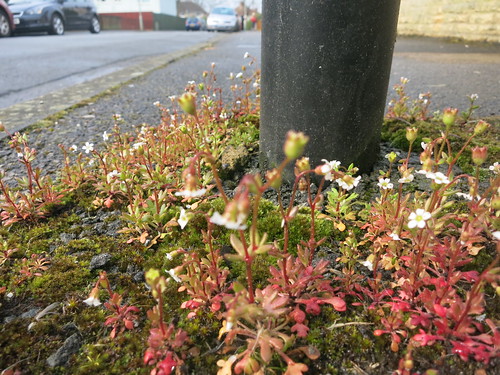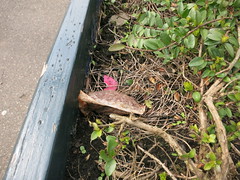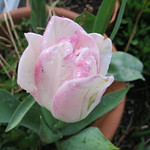Museums and Gardens have aspects in common. In each, certain elements of the discovered world have been selected and placed in a defined space, for pleasure, admiration, edification and education. My garden is a rackety pile of overcrowded elements, a jumble; but this too is a classic museum style, which reaches its apotheosis in the tangled banks of the
Pitt Rivers Museum.
The open, formal spaces of the
Ashmolean also have their attractions; exhibits carefully placed in smart white boxes; long borders of casts and significant paintings; showgarden flourishes of contemporary art and design. The physical extrusions of the museum into public space make a statement of intent; create the space that discusses the objects; but it is just the tip of iceberg. Under each museum spreads out the deep foundations of the dark ordered spaces of the stacks, the storage unit and the vast mazes of its endlessly updating and growing database.
A Restoration, a new piece of work by Elizabeth Price, knocks out a hole in a dark space in the elegantly ordered galleries of the Ashmolean, and information spills out, in active restoration, creating a garden; a maze; a city; a party; civilization; and then
Here is a clip:
We are building a garden in the database, the story begins, and an administrative task through
slight but expressive variation goes on to
cultivate a further germination full of
vigourous stylistic variation and the slow careful work of restoration blossoms into something larger, self replicating (
it is unusual as we understand for a restoration to be this expressive) and spreading out in a sudden act of flowering; like the past fertilising the future, imagined as a single, outrageous iconoclastic act, which because imagined rather than real, can be repeated endlessly, in the courts and passages of the museum, for all and future generations.
I quote (roughly - it is dark in the gallery and my notes are written over into illegibility) because the language has a fantastic combination of randomness and exactitude, as if they had emerged from the deliberations of a highly civilized but very determined committee. The language in the
Wikipedia Page on Knossos has a similar flair; courtly but a bit mechanical, as if the twin civilized arts of art and administration were coiled together, like vines that cooperate and do not compete, but nevertheless produce an effect that would never have been planned.
Knossos, Europe's first city, was irrigated and planted, a city of courtyard gardens. This ancient city pattern is still visible many older cities (certainly Oxford, where the Museums above are located). But the great excavator of Knossos
Arthur Evans was an Oxford man; and of what we see of the past is restoration, and the recognition of similar aspects, down the long passage of time.































